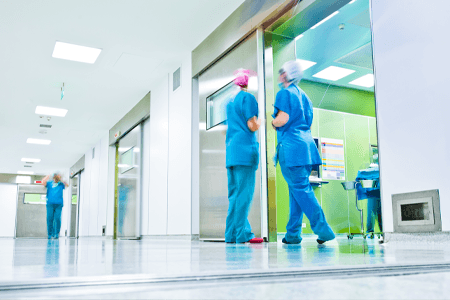Enhancing Air Quality in a Globally Acclaimed Hospital
Healthcare

A leading hospital were facing a critical challenge in maintaining air quality, as inefficient HVAC systems can compromise patient care, staff wellbeing, and operational efficiency—impacting both performance and reliability.
Our brief
We were approached by a world-renowned hospital facing significant challenges in understanding why several of their newly constructed medical buildings, despite being equipped with the latest building services and advanced control systems, were suffering from persistent poor air quality. Given the importance of air quality in medical facilities, this was a pressing issue that required immediate attention.
The hospital's facilities team had already devoted considerable time and effort over the course of several months, consulting with industry experts in an attempt to resolve the issue.
Despite these efforts, they were unable to determine the root cause of the poor air quality, leaving the problem unresolved and affecting the overall performance of the buildings.
Recognising the complexity of the situation, the hospital sought our expertise to help diagnose the issue. We were tasked with implementing a non-intrusive solution to measure and monitor air quality throughout the buildings. By collecting precise data, we aimed to identify the exact locations where air quality issues were occurring and to uncover the underlying causes. This would not only help the facilities team understand the problem more clearly, but also provide actionable insights to guide them toward effective solutions.
Our solution
cThings deployed a network of Indoor Air Quality (IAQ) sensors across the hospital’s facilities, enabling continuous monitoring of key parameters such as temperature, humidity, and CO2 levels. These battery-powered sensors utilised wireless LoRaWAN communication, ensuring a quick, cost-effective installation and commissioning process, all completed within a single day.
Once the sensors were configured to transmit real-time data to cThings Cloud, we created a digital representation of the building, mapping air quality and airflow throughout the spaces. We then integrated data from the building management system (BMS) to provide an additional layer of insight, helping to understand how the operation of the HVAC system was impacting air quality.
Using our advanced analytics package, we were able to analyse the relationship between air quality and the performance of the building’s services, offering valuable insights to optimise air quality and system efficiency.
"cThings gave us the real-time insights we needed to identify the air quality issues linked to our HVAC system. After making the recommended adjustments, we saw a significant improvement in air quality, enhancing the environment for staff and patients."
The results
Following the successful installation of the sensors and implementation of the cThings platform, the customer and their consultants gained valuable insights into the link between poor air quality and the operation of the HVAC system. With cThings Cloud automatically collecting data and delivering real-time metrics, the team could closely monitor the building's performance and identify key issues.
It was discovered that the building management system (BMS) was not effectively controlling the HVAC system, leading to poor air exchange, despite the system's data and control strategies indicating otherwise.
As a result, several corrective measures were implemented, including reconfiguring the BMS and adjusting the air circulation patterns. These changes led to a significant improvement in air quality throughout the buildings, ensuring a healthier and more comfortable environment.
The benefits
Improved air quality
Enhance air quality, leading to a healthier environment for building occupants.
Non-intrusive solution
Quick, cost-effective installation of wireless sensors without disrupting daily operations.
Enhanced building performance
Optimisation of the HVAC system and air circulation, improving overall building and energy efficiency.
Data-driven decisions
Continuous monitoring and analysis provided actionable insights for ongoing improvements.
Comprehensive system integration
Seamless integration of real-time data with the existing building management system for deeper insights and better control.